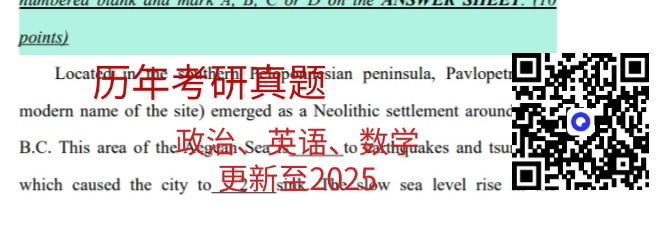北京理工大学物理学院研究生导师:王锋
姓名:王锋
所在学科:物理学院
职称:副教授
E-mail:llgyzh0@bit.edu.cn
个人简历
1996/9–2001/6, 中国科学院近代物理研究所, 粒子物理与原子核物理, 博士;
1992/9–1996/6, 西北大学, 理论物理, 学士;
工作经历
2015/12-至今,北京理工大学,物理学院,副教授
2014/12-2015/11,法国勒芒大学,物理系,访问学者
2011/11-2014/11,北京理工大学,机械与车辆学院,副教授
2010/10-2011/10,韩国浦项科技大学,化学系,研究员
2003/8-2010/9,北京理工大学,理学院物理系,副教授
2001/9-2003/6,清华大学,原子分子纳米科学研究中心,博士后
科研方向
长期从事含时密度泛函理论方法发展及其应用于原子碰撞和光与物质相互作用方面的研究。研究方向包括:(1)密度泛函理论发展及其在原子碰撞模型中的应用;(2)超短激光调控材料瞬时局部特性机理研究;(3)含能材料设计与性能预估;(4)纳米摩擦电荷转移机理研究。
近年来主持和参与的国家自然科学基金研究项目如下:
1.国家自然科学基金面上项目,11774030,密度泛函理论发展及其在原子碰撞模型中的应用,2018/01-2021/12,主持
2.国家自然科学基金重点项目,51735001,纳米发电机多级织构界面接触/摩擦起电机理与调控研究,2018/01-2022/12,参与
3.中央高校基本科研专项,2017CX10007,电子、原子层次新型含能材料设计与性能预测,2017/06-2019/12,参与
4.国家自然科学基金面上项目,11474020,多电子离子Auger过程和内壳光电离过程的理论研究,2015/01-2018/12,参与
5.国家自然科学基金重点项目,20933001,气溶胶表面动力学过程的原位谱学观测和理论化学计算模拟,2010/01-2013/12,参与
6.国家自然科学基金面上项目,10876003,氧与材料表面碰撞反应动力学研究,2009/01-2011/12,主持
7.国家自然科学基金面上项目,21071020,碳纳米管为基的纳米复合含能材料性能模拟,2011/01-2011/12,主持
8.火炸药行业青年创新基金,1070021020701,高温高压下炸药RDX和HMX初始反应动力学过程研究,2006/01-2008/06,主持
9.国家自然科学基金面上项目,10475007,沿面型介质阻挡放电的阳极条纹及放电机理研究,2005/01-2007/12,参与
学术成就
国内率先建立了一套基于密度泛函理论非绝热电子-离子耦合的原子碰撞动力学模型程序[核物理评论 19 (2002) 157、Journal of Chemical Physics 134 (2011) 154308];系统地研究了原子碰撞过程中电荷转移机理。国际上率先提出了从电子密度中提取体系态分辨信息的方法[Journal of Chemical Physics 139 (2013) 094108、Journal of Chemical Physics 145 (2016) 114104];当前,人们通过精密调控飞秒激光脉冲与物质相互作用物理过程,既能获得具有特定多维度(偏振、位相、频率、振幅、脉宽及模场等)时空结构的新型光场,又能获得具有特定物性(光、电、磁等)的新型物质状态,从中发现一系列新现象与新效应,并开发出相应的原创技术,为其在物理、信息处理与通讯、材料、化学与生命等研究及应用中提供基础性和前瞻性的科学技术储备。少周期超短飞秒激光脉冲具有超强、超快和时空波形灵活可控的特性,为开展“新型光场调控物理及应用”研究提供了有力的工具:超强特性使其可以深刻非线性地调控材料的(光、电、磁等)属性;超快特性使其可以非热、相干、精准地调控材料的(光、电、磁等)属性。我们的研究工作表明,少周期超短飞秒激光脉冲可以无损、可逆地瞬时动态调控宽
带隙透明材料(金刚石、氮化硼、碳化硅)的介电函数,使其显示极强的各向异性,并在特定的频段出现双曲色散特性,为纳米尺度的局域光聚焦、成像、传输与操控,以及全光调制和全光整形技术等研究及应用提供材料和物理基础。
代表性论文:
【1】Xiaoqin Zhang, Feng Wang*, Xiaoli Wang and Lan Jiang (2019): Controlling anisotropy of dielectrics by an ultrashort double-pulse laser, J. Phys. D: Appl. Phys. 52, 035106.
【2】Xiaoshuang Kong, Feng Wang*, Xiaoqin Zhang, Zehui Liu, and Xiaoli Wang (2018): Dielectric properties of cubic boron nitride modulated by an ultrashort laser pulse, Physical Review A 98, 053439.
【3】Xiaoqin Zhang, Feng Wang*, Fengshou Zhang, and Yugui Yao (2018): Control of the hyperbolic dispersion of dielectrics by an ultrashort laser pulse, Physical Review B 97, 014310.
【4】Chang-Kai Li, Feng Wang, Bin Liao, Xiao-Ping OuYang, and Feng-Shou Zhang* (2017): Ab initio electronic stopping power and threshold effect of channeled slow light ions in HfO2, Physical Review B 96, 094301.
【5】Chang-kai Li, Fei Mao, Feng Wang, Yan-long Fu, Xiao-ping Ouyang, and Feng-Shou Zhang* (2017): Electronic stopping power of slow-light channeling ions in ZnTe from first principles, Physical Review A 95, 052706.
【6】Xiaoqin Zhang, Feng Wang*, Lan Jiang, and Yugui Yao (2017): Manipulation of the dielectric properties of diamond by an ultrashort laser pulse, Physical Review B 95, 184301.
【7】Feng Wang*, Yugui Yao, Florent Calvayrac, and Fengshou Zhang (2016): Extraction of state-resolved information from systems with a fractional number of electrons within the framework of time-dependent density functional theory, Journal of Chemical Physics 145, 114104.
【8】Xuhai Hong, Feng Wang, Yong Wu*, Bingcong Gou, and Jianguo Wang (2016): H+-H2O collisions studied by time-dependent density-functional theory combined with the molecular dynamics method, Physical Review A 93, 062706.
【9】Cong-Zhang Gao, Jing Wang, Feng Wang, and Feng-Shou Zhang* (2014): Theoretical study on collision dynamics of H+ + CH4 at low energies, Journal of Chemical Physics 140, 054308-1-12.
【10】Feng Wang*, Lan Jiang, Xuhai Hong, Yalong Jiao, Jianguo Wang, and Fengshou Zhang (2013):
An effective method for state population within time-dependent density functional theory, Journal of Chemical Physics139,094108.
【11】Xuhai Hong, Feng Wang*, Yalong Jiao, Wenyong Su, Jianguo Wang, and Bingcong Gou (2013): Theoretical investigation of the electron capture and loss processes in the collisions of He2+ + Ne, Journal of Chemical Physics 139, 084321.
【12】C. L. Zhang, H. X. Hong, F. Wang, Y. Wu, and J. G. Wang* (2013): Theoretical investigation of He2+-Ar collisions in the energy range of 4–300 keV/amu, Physical Review A 87, 032711.
【13】Feng Wang*, Xuhai Hong, Jian Wang, Kwang S. Kim* (2011): Coordinate space translation technique for simulation of electronic process in the ion–atom collision, Journal of Chemical Physics 134, 154308.
招生信息
每年拟招收博士生和硕士生1~2名。
新闻来源: https://www.chinakaoyan.com/info/article/id/290433.shtml
声明:如本网转载稿涉及版权等问题,请作者致信kaoyan1365@126.com,我们将及时处理。



